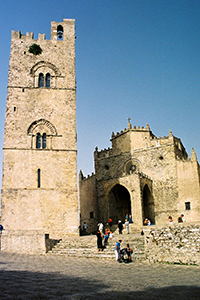Dr. Francesca Borgna
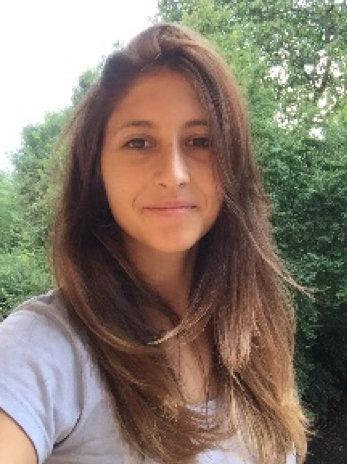 Francesca Borgna is a Postdoctoral Research Fellow at the Center for Radiopharmaceutical Sciences at Paul Scherrer Institute (PSI, Switzerland) since September 2018. She studied Pharmacy at the University of Padova in Italy from 2009 to 2014 and started afterwards her PhD in Molecular Sciences at the same University. During her PhD, she worked mainly in the framework of the ISOLPHARM project for the production of n.c.a. radionuclides with the isotope separation on-line (ISOL) technique at the Legnaro National Laboratories of INFN. During the same period, she also worked on the development of plasma proteins binding radioligands. She defended her PhD thesis in March 2018 before joining the group of PD Dr Cristina Müller at the Center for Radiopharmaceutical Sciences at PSI. Her research now focuses on the preclinical development of small molecular weight radioligands with improved pharmacokinetic properties and on the evaluation of radionuclides with ideal radiotheranostics application.
Francesca Borgna is a Postdoctoral Research Fellow at the Center for Radiopharmaceutical Sciences at Paul Scherrer Institute (PSI, Switzerland) since September 2018. She studied Pharmacy at the University of Padova in Italy from 2009 to 2014 and started afterwards her PhD in Molecular Sciences at the same University. During her PhD, she worked mainly in the framework of the ISOLPHARM project for the production of n.c.a. radionuclides with the isotope separation on-line (ISOL) technique at the Legnaro National Laboratories of INFN. During the same period, she also worked on the development of plasma proteins binding radioligands. She defended her PhD thesis in March 2018 before joining the group of PD Dr Cristina Müller at the Center for Radiopharmaceutical Sciences at PSI. Her research now focuses on the preclinical development of small molecular weight radioligands with improved pharmacokinetic properties and on the evaluation of radionuclides with ideal radiotheranostics application.
Prof. Vicky Caveliers
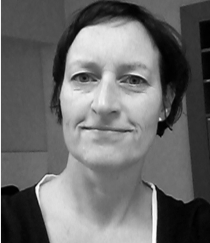 Prof Vicky Caveliers was appointed Head of the Radiopharmacy Unit at the University Hospital UZ Brussel in 2003 after obtaining her PhD Degree in (Radio)Pharmaceutical Sciences at the Vrije Universiteit Brussel (VUB). She is a certified Radiopharmacist and Professor at the In vivo Cellular and Molecular Imaging Laboratory (ICMI) at the Faculty of Medicine and Pharmacy of the VUB. In the clinic she is responsible for the preparation, quality control, quality assurance and release of PET (18F, 68Ga) and conventional SPECT (99mTc) radiopharmaceuticals for routine patient administration. She is the coordinator of the Brussels Imaging Pharmacy (BIP) project, a centralized GMP-PET radiopharmacy within the Brussels region. The research focus of the ICMI laboratory is on the development of new radiopharmaceuticals based on camelid single domain antibody fragments (also called VHH or Nanobodies) for diagnosis and radionuclide therapy applications. These activities include optimization of (automated) radiolabeling procedures, purification methods and formulation of the radiolabeled probes, followed by in vitro and in vivo evaluation in terms of biodistribution, in vivo stability and targeting potential. The main goal of the research is translation of these preclinically validated tracers to early phase clinical trials, including fulfilling all regulatory requirements In 2012, a first-in-human clinical trial was initiated with an in-house developed 68Ga-labeled anti-HER2 VHH for PET imaging in breast cancer patients. Prof Vicky Caveliers has supervised many master and PhD students working on the above-mentioned topics and she is (co)-author of 82 publications in scientific journals with an international referee system.
Prof Vicky Caveliers was appointed Head of the Radiopharmacy Unit at the University Hospital UZ Brussel in 2003 after obtaining her PhD Degree in (Radio)Pharmaceutical Sciences at the Vrije Universiteit Brussel (VUB). She is a certified Radiopharmacist and Professor at the In vivo Cellular and Molecular Imaging Laboratory (ICMI) at the Faculty of Medicine and Pharmacy of the VUB. In the clinic she is responsible for the preparation, quality control, quality assurance and release of PET (18F, 68Ga) and conventional SPECT (99mTc) radiopharmaceuticals for routine patient administration. She is the coordinator of the Brussels Imaging Pharmacy (BIP) project, a centralized GMP-PET radiopharmacy within the Brussels region. The research focus of the ICMI laboratory is on the development of new radiopharmaceuticals based on camelid single domain antibody fragments (also called VHH or Nanobodies) for diagnosis and radionuclide therapy applications. These activities include optimization of (automated) radiolabeling procedures, purification methods and formulation of the radiolabeled probes, followed by in vitro and in vivo evaluation in terms of biodistribution, in vivo stability and targeting potential. The main goal of the research is translation of these preclinically validated tracers to early phase clinical trials, including fulfilling all regulatory requirements In 2012, a first-in-human clinical trial was initiated with an in-house developed 68Ga-labeled anti-HER2 VHH for PET imaging in breast cancer patients. Prof Vicky Caveliers has supervised many master and PhD students working on the above-mentioned topics and she is (co)-author of 82 publications in scientific journals with an international referee system.
Dr. Cathy CUTLER
 S. Cutler, Ph.D. is Director of the Medical Isotope Research Production and Development group (MIRP) at Brookhaven National Laboratory. Dr. Cutler earned the Bachelor of Sciences in Biochemistry in 1988 and a Doctorate in Inorganic Chemistry in 1993 from the University of Cincinnati with the thesis, Studies at the Interface between Inorganic Chemistry and Nuclear Medicine: Mechanisms of Action of Selected Metal Based Radiopharmaceuticalsunder the direction of Dr. Ed Deutsch. Dr. Cutler then joined the Radiation Sciences group at Washington University School of Medicine where she worked under the guidance of Dr. Michael J. Welch where she developed and characterized a Ga-68 brain agent that crosses the intact blood brain barrier; designed studies to determine how in vivometabolism affects compounds distribution, clearance and target selectivity; and collaborated to radiolabel and evaluate peptides containing unique amino acids with modified side chains to bind metals such as technetium, rhenium and rhodium. It was this collaboration that drew Dr. Cutler to the University of Missouri Research Reactor Centers Radiopharmaceuticals Group in 1998. She worked there till June of 2015. The MIRP group at Brookhaven operates the LINAC Isotope Producer (BLIP) that produces both Sr-82 and Ge-68 for commercial production as well as a number of research radioisotopes and is currently evaluating the accelerator production of Ac-225. Additionally, she directs the Target Processing Labs (TPL) that manufactures targets from both the BLIP and isotopes produced off-site for medical applications meeting cGMP. Dr. Cutler’s research focuses on developing production and separation methods for high specific activity radioisotopes, creating a suite of diagnostic and therapeutic agents tailored for individual needs which has been funded by the DOE, NIH, NSF and public foundations. She brings more than 20 years of experience in the development and evaluation of radiopharmaceuticals, utilizing bioinorganic and radioanalytical chemistry to develop and evaluate radiopharmaceuticals for both diagnosis and therapy.
S. Cutler, Ph.D. is Director of the Medical Isotope Research Production and Development group (MIRP) at Brookhaven National Laboratory. Dr. Cutler earned the Bachelor of Sciences in Biochemistry in 1988 and a Doctorate in Inorganic Chemistry in 1993 from the University of Cincinnati with the thesis, Studies at the Interface between Inorganic Chemistry and Nuclear Medicine: Mechanisms of Action of Selected Metal Based Radiopharmaceuticalsunder the direction of Dr. Ed Deutsch. Dr. Cutler then joined the Radiation Sciences group at Washington University School of Medicine where she worked under the guidance of Dr. Michael J. Welch where she developed and characterized a Ga-68 brain agent that crosses the intact blood brain barrier; designed studies to determine how in vivometabolism affects compounds distribution, clearance and target selectivity; and collaborated to radiolabel and evaluate peptides containing unique amino acids with modified side chains to bind metals such as technetium, rhenium and rhodium. It was this collaboration that drew Dr. Cutler to the University of Missouri Research Reactor Centers Radiopharmaceuticals Group in 1998. She worked there till June of 2015. The MIRP group at Brookhaven operates the LINAC Isotope Producer (BLIP) that produces both Sr-82 and Ge-68 for commercial production as well as a number of research radioisotopes and is currently evaluating the accelerator production of Ac-225. Additionally, she directs the Target Processing Labs (TPL) that manufactures targets from both the BLIP and isotopes produced off-site for medical applications meeting cGMP. Dr. Cutler’s research focuses on developing production and separation methods for high specific activity radioisotopes, creating a suite of diagnostic and therapeutic agents tailored for individual needs which has been funded by the DOE, NIH, NSF and public foundations. She brings more than 20 years of experience in the development and evaluation of radiopharmaceuticals, utilizing bioinorganic and radioanalytical chemistry to develop and evaluate radiopharmaceuticals for both diagnosis and therapy.
Dr. Emmanuel DESHAYES
Emmanuel Deshayes is a nuclear medicine physician at Montpellier Cancer Institute, especially involved in targeted radionuclide therapy. He is also involved in the pre-clinical lab “radiobiology and targeted radiotherapy” (INSERM U1194, headed by Jean Pierre Pouget) where he developed a theragnostic approach of ovarian cancer using radiolabeled monoclonal antibodies.
Prof. Marco DURANTE
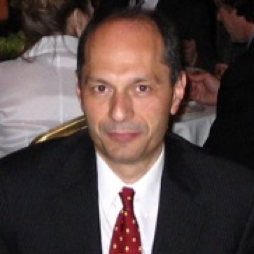 Prof. Dr. Marco Durante is Director of the Biophysics Department at GSI Helmholtz Center for Heavy Ion Research (Darmstadt, Germany) and Full Professor of Physics at the Technical University of Darmstadt. He is also Professor of Physics at the University of Naples Federico II in Italy, and at the Gunma College of Medicine in Japan. Dr. Durante got his Ph.D. in physics in 1992 and has dedicated his research efforts to the biophysics of high-energy charged particles, with applications in cancer therapy and space radiation protection. He is generally recognized as world leader in the field of particle radiobiology and medical physics and is co- author of over 300 papers in peer-reviewed scientific journals (h-index=44) and one patent on proton therapy (EU patent WO2013083333). He is currently chair of the ESA Life Sciences Advisory Group and of the ESA Topical Team on Space Radiation, vice-chair of the Particle Therapy Co-Operative Group (PTCOG), member of the technical-scientific Committee of the Italian Hadrontherapy Center (CNAO) and of the Program Advisory Committee of the GANIL (Caen, France), KVI (Groningen, The Netherlands), iThemba (South Africa), and Rez (Czech Republic) accelerators. Dr. Durante was President of the International Association for Radiation Research (IARR) 2011-15, and is Associate Editor in several International scientific journals (Br. J. Radiol., Int. J. Particle Ther., Int. J. Radiat. Biol., Phys. Med., Radiat. Environ. Biophys., J. Radiat. Res., Life Sci. Space Res., JINST, Front. Oncol.). He has been awarded several prizes for his contributions to charged particle biophysics, including the 2004 Galileo Galilei Award in Medical Physics, the 60th Timofeeff-Ressovsky medal by the Russian Academy of Sciences, the 8th Warren K. Sinclair Award of the US National Academy of Sciences, the 2013 IBA-Europhysics Award for Applied Nuclear Science and Nuclear Methods in Medicine (European Physics Society) and the 2013 Bacq & Alexander award of the European Radiation Research Society (ERRS).
Prof. Dr. Marco Durante is Director of the Biophysics Department at GSI Helmholtz Center for Heavy Ion Research (Darmstadt, Germany) and Full Professor of Physics at the Technical University of Darmstadt. He is also Professor of Physics at the University of Naples Federico II in Italy, and at the Gunma College of Medicine in Japan. Dr. Durante got his Ph.D. in physics in 1992 and has dedicated his research efforts to the biophysics of high-energy charged particles, with applications in cancer therapy and space radiation protection. He is generally recognized as world leader in the field of particle radiobiology and medical physics and is co- author of over 300 papers in peer-reviewed scientific journals (h-index=44) and one patent on proton therapy (EU patent WO2013083333). He is currently chair of the ESA Life Sciences Advisory Group and of the ESA Topical Team on Space Radiation, vice-chair of the Particle Therapy Co-Operative Group (PTCOG), member of the technical-scientific Committee of the Italian Hadrontherapy Center (CNAO) and of the Program Advisory Committee of the GANIL (Caen, France), KVI (Groningen, The Netherlands), iThemba (South Africa), and Rez (Czech Republic) accelerators. Dr. Durante was President of the International Association for Radiation Research (IARR) 2011-15, and is Associate Editor in several International scientific journals (Br. J. Radiol., Int. J. Particle Ther., Int. J. Radiat. Biol., Phys. Med., Radiat. Environ. Biophys., J. Radiat. Res., Life Sci. Space Res., JINST, Front. Oncol.). He has been awarded several prizes for his contributions to charged particle biophysics, including the 2004 Galileo Galilei Award in Medical Physics, the 60th Timofeeff-Ressovsky medal by the Russian Academy of Sciences, the 8th Warren K. Sinclair Award of the US National Academy of Sciences, the 2013 IBA-Europhysics Award for Applied Nuclear Science and Nuclear Methods in Medicine (European Physics Society) and the 2013 Bacq & Alexander award of the European Radiation Research Society (ERRS).
Prof. Samer, EZZIDDIN
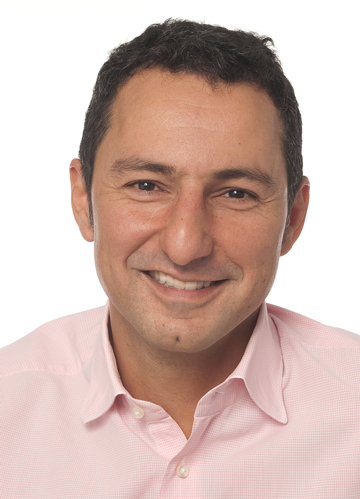 After graduation from Medical School in Frankfurt a.M. / Germany in 1997, Samer Ezziddin went on to a one-year residency in Medicine and Endocrinology at the University of Cologne. He passed the USMLE including the Clinical Skills Assessment in Philadelphia/MA, and achieved full ECFMG certification in 1999. During his residency and subsequent time as Assistant Medical Director in Nuclear Medicine at the University of Bonn he introduced 177Lu-based peptide receptor radionuclide therapy (PRRT) in 2004 and developed the targeted therapy program. After an externship in Interventional Oncology at Northwestern University / Chicago (Prof. Salem), he restructured and expanded the Radioembolization routine at his institution during his Deputy Director period in Bonn (2008-2014), achieving the first European dual-license for Resin and Glass Microsphere Radioembolization, and introduced intra-arterial PRRT. His German PhD (Habilitation) in Nuclear Medicine focused on outcome predictors in PRRT. He is a well-recognized international expert on neuroendocrine tumors and targeted radionuclide therapy and has extensively published in the area of dosimetry and molecular imaging for planning and monitoring radioembolization (SIRT). The master thesis of his accompanying studies in Medical Device Clinical Sciences (MSc) at the University of Bonn addressed the different impact of radioembolization devices. Other fields of expertise and activities involve thyroid & prostate cancer and multimodality imaging (PET-CT, SPECT-CT).
After graduation from Medical School in Frankfurt a.M. / Germany in 1997, Samer Ezziddin went on to a one-year residency in Medicine and Endocrinology at the University of Cologne. He passed the USMLE including the Clinical Skills Assessment in Philadelphia/MA, and achieved full ECFMG certification in 1999. During his residency and subsequent time as Assistant Medical Director in Nuclear Medicine at the University of Bonn he introduced 177Lu-based peptide receptor radionuclide therapy (PRRT) in 2004 and developed the targeted therapy program. After an externship in Interventional Oncology at Northwestern University / Chicago (Prof. Salem), he restructured and expanded the Radioembolization routine at his institution during his Deputy Director period in Bonn (2008-2014), achieving the first European dual-license for Resin and Glass Microsphere Radioembolization, and introduced intra-arterial PRRT. His German PhD (Habilitation) in Nuclear Medicine focused on outcome predictors in PRRT. He is a well-recognized international expert on neuroendocrine tumors and targeted radionuclide therapy and has extensively published in the area of dosimetry and molecular imaging for planning and monitoring radioembolization (SIRT). The master thesis of his accompanying studies in Medical Device Clinical Sciences (MSc) at the University of Bonn addressed the different impact of radioembolization devices. Other fields of expertise and activities involve thyroid & prostate cancer and multimodality imaging (PET-CT, SPECT-CT).
Samer Ezziddin has contributed to various guidelines and task groups including commitments as member of the Radionuclide Therapy Committee of the European Association of Nuclear Medicine (EANM), the Therapy Committee and Guideline Committee of the German Society of Nuclear Medicine (DGN), the National Expert Group for Radioembolization (SIRTranet) and the Steering Committee for the CIRSE Registry for SIR-Microsphere Therapy (CIRT). Since August 2014 Professor Ezziddin is Head of the Nuclear Medicine Department at Saarland University Hospital. With his therapeutic focus in oncology and devotion to targeted treatment he aims at individualizing and optimizing radionuclide-based targeted tumor therapy. Under his direction, the University-based Dep. of Nuclear Medicine in Homburg became one of the leading institutions worldwide in the field of molecular targeted radionuclide therapy of advanced tumors.
Prof. Uwe HABERKORN
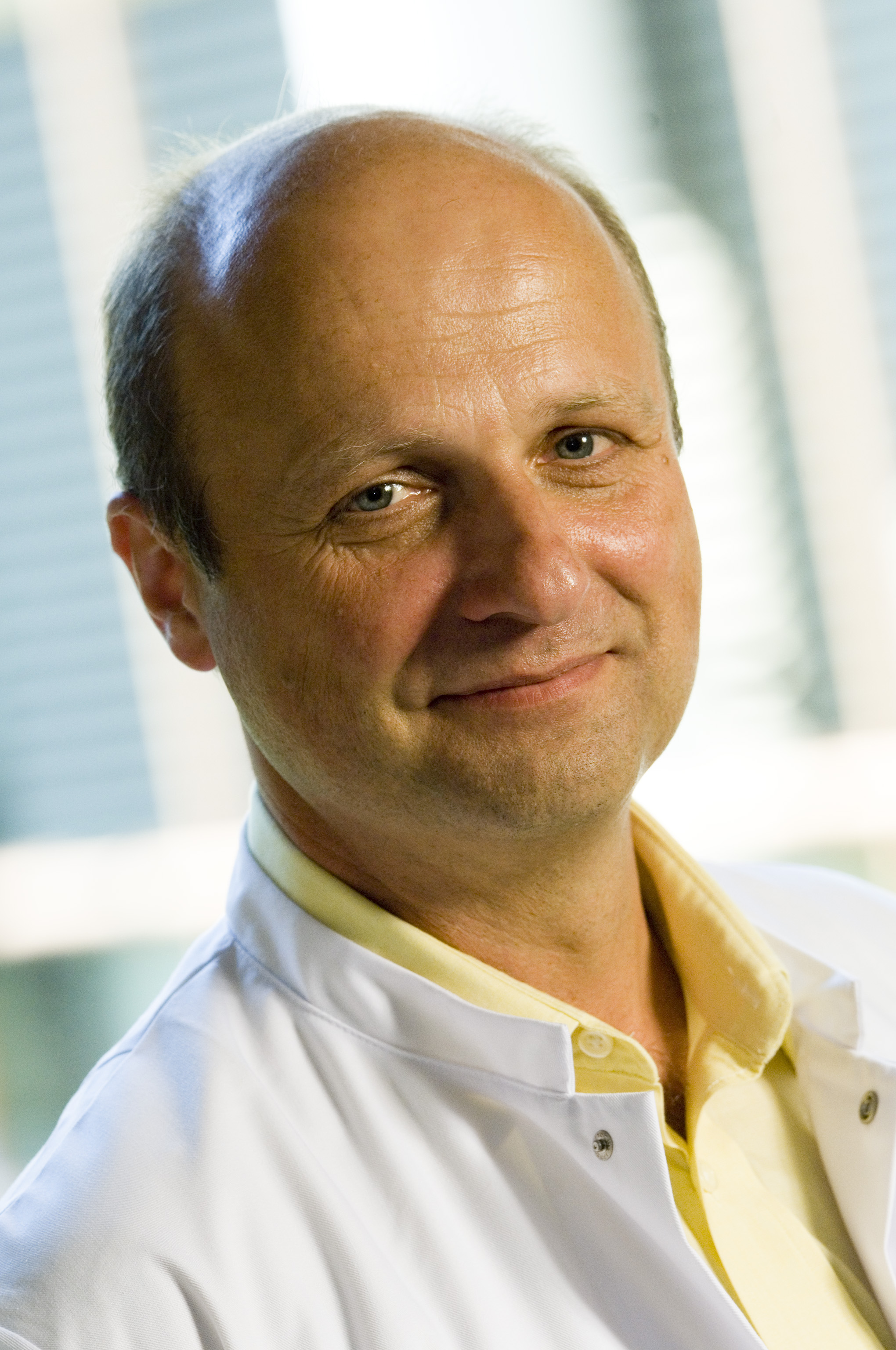
1982-88: Studies in medicine at the universities of Marburg, Würzburg and Heidelberg
1985 – 88: M.D. correlation of ultrasound image pattern and liver tissue properties in excised livers
1988-98: Research physician at the department of Oncological Diagnostics and therapy (Prof. Dr. G. van Kaick) at the Deutsches Krebsforschungszentrum Heidelberg
1995: Board Nuclear medicine
1996: Habilitation thesis
Professor of Nuclear medicine at the university of Heidelberg, Head of the Dept. of Nuclear Medicine, University of Heidelberg, Head of the Clinical Cooperation Unit Nuclear Medicine at the Deutsches Krebsforschungszentrum Heidelberg Using knowledge of biochemistry, biotechnology and molecular biology, radioisotope methods offer the chance to develop a huge variety of novel tracers for diagnosis and therapy. This was my motivation to engage in molecular biology and biotechnology for the last 25 years. Since the radiopharmaceuticals are applied in non-pharmacological relevant doses, a rapid transfer into clinical application is possible. This was exemplified for PSMA ligands where we were able to change the clinical practice for the diagnosis and therapy of prostate cancer worldwide.
Prof. Ferid HADDAD

Dr. Atsushi KITAGAWA
1990-1994:Master’s and doctorate degrees in Science (Physics) from Osaka University in 1988 and 1992
1990-1994:Joined in the construction of Heavy Ion Medical Accelerator as the Guest researcher of NIRS
1994-present:Take charge of the development and operation of ion sources and medical applications with secondary ion beams as a Researcher and a Senior Researcher, NIRS-QST
2004:Senior Specialist of Ministry of Education, Culture, Sports, Science and Technology
2006-present:Coordinate information exchanges, cooperation researches, technology transfers, personnel trainings, and so on as a Leader of Heavy-Ion Radiotherapy Promotion Unit, NIRS-QST
2017-2019:Director of Research Planning and Promotion Office, NIRS-QST
2019-present:Director of Human Resources Development Center, NIRS-QST
Mr. Keith KERSHAW
 Keith Kershaw is a senior mechanical engineer at CERN with over 30 years’ experience of design and development of specialised and remote handling equipment for the UK nuclear industry and for CERN’s particle accelerators and experiments. After studying mechanical engineering at Imperial College in London, he worked as a patent examiner for the European Patent Office in Holland for two years before returning to UK industry to do something more inventive. His nuclear industry projects included design and development of modular hydraulic tele-manipulator systems, design and build of radiation-hard robotic systems and remote handling reactor safety inspection. His CERN projects include development of installation method concepts then definition and procurement of overhead travelling cranes for the Large Hadron Collider (LHC) experiments; the conceptual design and development of the custom-designed vehicles and handling equipment used to transport and install the superconducting cryo-magnets and collimators during the LHC construction; the initial concept and development of the remotely operated LHC inspection train, “TIM”; and more recently, the conceptual design of a target facility for new fixed-target physics programmes – the “Beam Dump Facility”. As part of CERN’s Medicis core management team, he was responsible for the conceptual design of the integrated remote target handling and motorised shielding systems, followed by work on the development of the Medicis isotope collection point and shielded transfer system.
Keith Kershaw is a senior mechanical engineer at CERN with over 30 years’ experience of design and development of specialised and remote handling equipment for the UK nuclear industry and for CERN’s particle accelerators and experiments. After studying mechanical engineering at Imperial College in London, he worked as a patent examiner for the European Patent Office in Holland for two years before returning to UK industry to do something more inventive. His nuclear industry projects included design and development of modular hydraulic tele-manipulator systems, design and build of radiation-hard robotic systems and remote handling reactor safety inspection. His CERN projects include development of installation method concepts then definition and procurement of overhead travelling cranes for the Large Hadron Collider (LHC) experiments; the conceptual design and development of the custom-designed vehicles and handling equipment used to transport and install the superconducting cryo-magnets and collimators during the LHC construction; the initial concept and development of the remotely operated LHC inspection train, “TIM”; and more recently, the conceptual design of a target facility for new fixed-target physics programmes – the “Beam Dump Facility”. As part of CERN’s Medicis core management team, he was responsible for the conceptual design of the integrated remote target handling and motorised shielding systems, followed by work on the development of the Medicis isotope collection point and shielded transfer system.
Prof. Ulrich RATZINGER
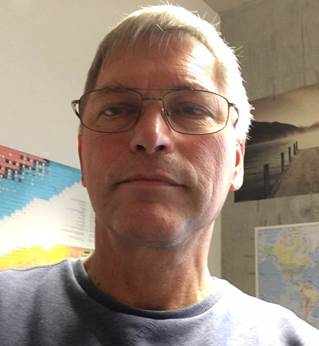 He is a Full Professor in Physics at Goethe-University Frankfurt, Germany. Over the last 35 years, he focused on the development of low and medium energy ion accelerator structures. He got his Diploma and PhD at the Technical University Munich. Multi-cell cavities of the H –Type have been a main topic of his research, as well as beam dynamics concepts like KONUS and EQUUS. Superconducting as well as room temperature structures have been designed and realized. He was an accelerator scientist at GSI Darmstadt from 1987 to 2000. During this time a synchrotron injector concept was developed, which is now applied at many research laboratories and at medical ion therapy centers. He was acting director of the Institute for Applied Physics IAP for many years. At present his working group is deeply involved in the 70 MeV, 70 mA proton linac for the GSI/FAIR-project as well as in the construction of the Frankfurt neutron source FRANZ. For his contributions to accelerator science he received the Baum –Award 2005 as well as the Gerald Kucera Laureatus Professorship in 2009.
He is a Full Professor in Physics at Goethe-University Frankfurt, Germany. Over the last 35 years, he focused on the development of low and medium energy ion accelerator structures. He got his Diploma and PhD at the Technical University Munich. Multi-cell cavities of the H –Type have been a main topic of his research, as well as beam dynamics concepts like KONUS and EQUUS. Superconducting as well as room temperature structures have been designed and realized. He was an accelerator scientist at GSI Darmstadt from 1987 to 2000. During this time a synchrotron injector concept was developed, which is now applied at many research laboratories and at medical ion therapy centers. He was acting director of the Institute for Applied Physics IAP for many years. At present his working group is deeply involved in the 70 MeV, 70 mA proton linac for the GSI/FAIR-project as well as in the construction of the Frankfurt neutron source FRANZ. For his contributions to accelerator science he received the Baum –Award 2005 as well as the Gerald Kucera Laureatus Professorship in 2009.
Prof. Gregory SEVERIN
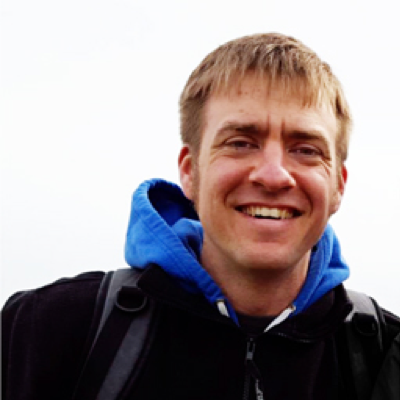 Gregory Severin is an Assistant Professor of Chemistry at Michigan State University in East Lansing, MI, USA. His research is focused on the isolation and purification of application-relevant radioisotopes result from secondary fast heavy-ion beam irradiations. Before moving to MSU, he had the good fortune to participate in ISOLDE experiments to collect strange radionuclides like 140Nd and 134Ce for preclinical studies.
Gregory Severin is an Assistant Professor of Chemistry at Michigan State University in East Lansing, MI, USA. His research is focused on the isolation and purification of application-relevant radioisotopes result from secondary fast heavy-ion beam irradiations. Before moving to MSU, he had the good fortune to participate in ISOLDE experiments to collect strange radionuclides like 140Nd and 134Ce for preclinical studies.
Prof. Elisabeth VAN DE VRIES
 Prof. dr. E.G. Elisabeth de Vries, MD, PhD is Professor of Medical Oncology at the University Medical Center Groningen, Groningen, the Netherlands.She is involved in patient care, teaching, and research. She actively promoted the view that a multidisciplinary approach with close interactions between the laboratory and clinic is crucial for improving prospects for cancer patients. Her focus is on interdisciplinary, translational research, aiming for personalized medicine. Her research lines are aimed at increasing the sensitivity of tumors to anticancer drugs, and she uses imaging techniques to support this. Apart from laboratory studies, she performs and coordinates clinical trials. She has received numerous grants. She is currently co-chair of the RECIST committee on behalf of the EORTC and she is chair of the ESMO Magnitude of Clinical Benefit working group and the ESMO Cancer Medicines working group. In 2002, she was appointed as a member of the Royal Academy of Arts and Sciences (KNAW). She received the European Society of Medical Oncology (ESMO) award in 2009. She was awarded a Royal Netherlands Academy of Sciences professorship in 2011.
Prof. dr. E.G. Elisabeth de Vries, MD, PhD is Professor of Medical Oncology at the University Medical Center Groningen, Groningen, the Netherlands.She is involved in patient care, teaching, and research. She actively promoted the view that a multidisciplinary approach with close interactions between the laboratory and clinic is crucial for improving prospects for cancer patients. Her focus is on interdisciplinary, translational research, aiming for personalized medicine. Her research lines are aimed at increasing the sensitivity of tumors to anticancer drugs, and she uses imaging techniques to support this. Apart from laboratory studies, she performs and coordinates clinical trials. She has received numerous grants. She is currently co-chair of the RECIST committee on behalf of the EORTC and she is chair of the ESMO Magnitude of Clinical Benefit working group and the ESMO Cancer Medicines working group. In 2002, she was appointed as a member of the Royal Academy of Arts and Sciences (KNAW). She received the European Society of Medical Oncology (ESMO) award in 2009. She was awarded a Royal Netherlands Academy of Sciences professorship in 2011.
Dr. Jarno VAN DE WALLE
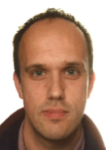 In 2006, he obtained his PhD in experimental nuclear physics from the KU Leuven (Belgium) on the topic of Coulomb excitation of neutron-rich Zinc isotopes at the REX post-accelerator at the ISOLDE laboratory at CERN. From 2006 to 2009 he was a research fellow at the ISOLDE laboratory, where he was involved in reaction experiments with post-accelerated radioactive ion beams (Coulomb excitation and transfer reactions) and beta-decay experiments. From 2010 to 2011, he was affiliated with the University of Groningen (the Netherlands) and was involved in experiments with radioactive ion beams at GANIL (France), reaction studies at RCNP (Osaka) and detector developments for the FAIR facility. From 2011 onwards he works for Ion Beam Applications in Belgium, where he was involved in the commissioning of a new 230 MeV proton super conducting synchro-cyclotron for proton therapy, the design and upgrade of cyclotrons for production of radio-pharmaceuticals, magnet design for rhodotrons, design of ionization chambers, research into new accelerators, etc ... From june 2019 he will work for the Belgian Nuclear Research Center (SCK) in the framework of the MYRRHA project, more specifically on the development of a new Isotope Separation On-Line laboraty attached to the MYRRHA linear accelerator
In 2006, he obtained his PhD in experimental nuclear physics from the KU Leuven (Belgium) on the topic of Coulomb excitation of neutron-rich Zinc isotopes at the REX post-accelerator at the ISOLDE laboratory at CERN. From 2006 to 2009 he was a research fellow at the ISOLDE laboratory, where he was involved in reaction experiments with post-accelerated radioactive ion beams (Coulomb excitation and transfer reactions) and beta-decay experiments. From 2010 to 2011, he was affiliated with the University of Groningen (the Netherlands) and was involved in experiments with radioactive ion beams at GANIL (France), reaction studies at RCNP (Osaka) and detector developments for the FAIR facility. From 2011 onwards he works for Ion Beam Applications in Belgium, where he was involved in the commissioning of a new 230 MeV proton super conducting synchro-cyclotron for proton therapy, the design and upgrade of cyclotrons for production of radio-pharmaceuticals, magnet design for rhodotrons, design of ionization chambers, research into new accelerators, etc ... From june 2019 he will work for the Belgian Nuclear Research Center (SCK) in the framework of the MYRRHA project, more specifically on the development of a new Isotope Separation On-Line laboraty attached to the MYRRHA linear accelerator
